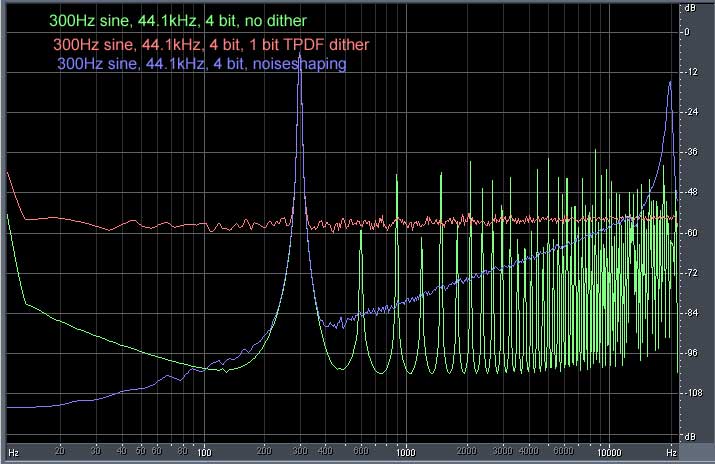I have been an audiophile all my semi-adult life, getting into it in a big way while I was in high school. I just bought the most sophisticated sound system that I have ever owned: a
Phonak Audeo Q90-312 system. That's right, they're
deaf-aids. I have been struggling with hearing loss for about a decade, and I finally got fed up with not hearing offhand remarks in meetings, and asking people to repeat themselves. My music enjoyment was never affected much, if I turned it up loud enough. But my family objected to that.
I resisted getting hearing aids because I figured the fidelity would be low; optimized for speech intelligibility over fidelity. I had already decided what I wanted: Something like the Dolby S encoder for cassette tape. And it had to be high fidelity, wide band and low distortion.
The Dolby S encoder is essentially a multi-band, equalized compressor, whose job it is to keep low-level signals above the tape hiss, backing off once the input signal gets above the noise level. In my case, the noise is
tinnitus - ringing in the ear. For me, it's like narrow band pink noise, centered on about 4 kHz. Sounds need to be louder than that, in that spectral region, in order for me to hear them.
One of the features I like about Dolby S is that the design was based on the
principle of least action (
Ray Dolby borrowed the term from physics, but it makes sense in a different way, in this context too). As the signal gets above the noise, further expansion isn't necessary, so Dolby S gets out of the way, and lets the system behave normally. Of course, my hearing is compromised, so while the encoder (hearing aid) brings the signal up above the ringing in my ears, there is no corresponding decoder to undo the encoding. Or is there? As a matter of fact, there is: my brain! I'll get back to that.
 |
| Hearing Impaired Musician |
I started researching hearing aid technology, asking in particular, what do hearing impaired musicians use? Well, they use high-fidelity,
WDRC-TILL (wideband dynamic range compression with treble increase at low levels) devices (or they did a decade or so ago). So, armed with this information, I sallied forth to
my local audiologist, and told her that I'm her worst nightmare: a well-informed electronics buff, critical listener and opinionated & demanding audiophile. That news didn't seem to upset her in the least.
She took me back to the soundproof room and we did a hearing test. She keyed the data into her desktop computer, which displayed my hearing chart and calculated the necessary correction. We discussed various models of deaf-aids, and I explained that I would require the highest possible fidelity, and that I was very skeptical that anything could meet my requirements. She finally selected a sample and put them in my ears. She then radioed the prescription to the devices, configured them with the necessary gain, equalization and compression (in 20 bands). I could instantly hear better, and they sounded great (w00t)!
These devices have FM transceivers, so they can communicate with each other, and with a
Bluetooth ComPilot that I can wear around my neck if I want to use my cell phone hands-free, or listen to a TV or iPod through my deaf-aids. In normal operation, they radio audio information left and right, to continuously triangulate on stereophonic directional cues, just as our brains do. So they can classify noise sources, as well as speech sources, that the
digital signal processor on each ear can then sort out in real time. It's quite amazing, and all that in a package that is so small that the casual observer cannot even see I'm wearing unless I point them out.
The electronics (7/8" long) tuck behind each ear, and the tiny loudspeakers, pictured above right, on the other end of the wire, go in each ear canal. They have excellent fidelity - at least for frequencies above 300 Hz or so. Below 300 Hz, where I don't require any assistance anyway, the direct sound just goes right past them. They're driven by a super high-efficiency class-D amplifier, so battery life is about six or seven days (if I turn the devices off at night when I'm not using them). Batteries are mercury free
air-zinc type 312.
For the first two weeks, I was delighted that I could understand speech so much better, even in noisy restaurants, and in conferences at work. But I did notice some distracting artifacts: the stereo image seemed to move around, and I noticed a strange "warble", kind of like the sound I would hear when I was a kid, and my brother and I would talk to each other through a rotating fan. Some people describe the sound as being like talking in a corrugated pipe.
The first artifact was undoubtedly due to the devices trying to make voices more intelligible, by changing their directional characteristics. It's great for speech, but for music, not so much. The second artifact, I found after doing a bit of research on the web, is probably caused by the anti-feedback algorithm being set too high. This chipset (code named
Spice) has a characteristic sound when feedback cancellation kicks in.
So when I went in for my initial two-week tune-up and oil change, I told the audiologist that I need a "stable platform" for music; I described the warble, and what I had found on the web. She pulled up the configuration software, and I was pleased to see, there was a "music" program right on the menu. So she added it to my configuration options. When I listen to music, I can push the button behind my ear to select the music mode.
The audiologist also noted that anti-feedback was set rather high. She turned it off, and we experimented with various feedback-inducing scenarios, none of which set them off, so we disabled anti-feedback, and the warble is gone. My hearing loss probably doesn't require enough gain to risk feedback. That could change if my hearing continues to decline, but for now it isn't a problem.
When I first started wearing the devices, it was like having new glasses: everything sounded freakishly clear, and I noticed details that I hadn't heard in years. This is like listening to a Dolby S-encoded cassette without the decoder turned on, only more so. But after a while I became accustomed to the sound, until now it just sounds natural - except that I can understand speech and hear soft music. My brain has adapted and provides the necessary decoding.
The fidelity is spectacular - and I'm speaking as an audiophile now. I can listen to music and enjoy it more, and the hearing aids only enhance the experience - they don't get in the way, as I feared they might. Low-volume live music is audible and enjoyable again. I have noticed zero distortion or overload with loud music, and no compression artifacts with sudden dynamic changes. My family appreciates that I don't have to turn up my sound system or the TV to deafening levels. Now I wonder why I waited so long to do this.






